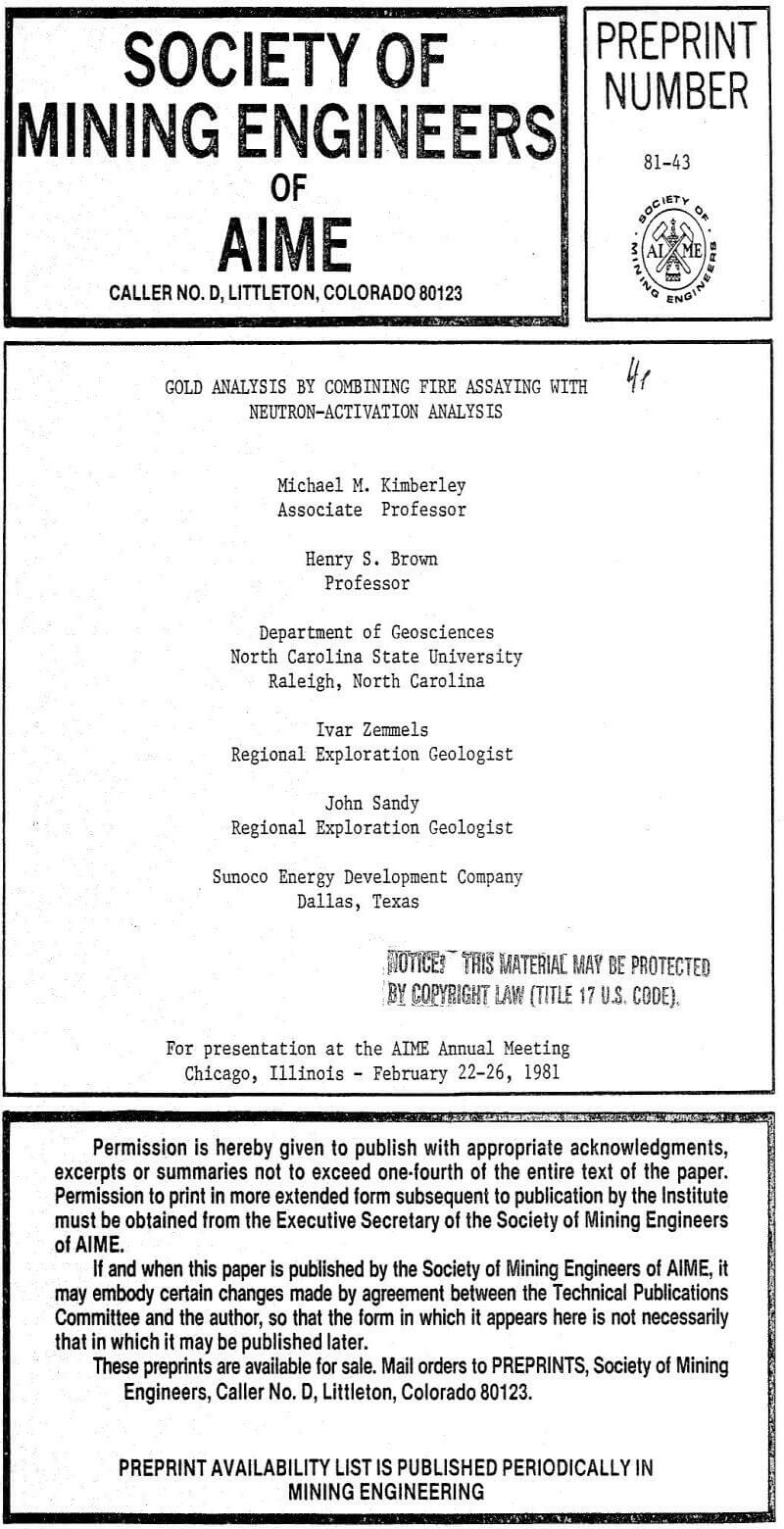Gold values in the surveyed sulfide-poor rock units proved to be generally even lower than those in sulfidic sandstone. As a further check on this survey of mineralization, silver values began to be measured by NAA on the silver-gold beads. Radioactivity induced in silver by neutron bombardment is long-lived. The half-life of 110mAg is 253 days, as opposed to a half-life of 2.7 days for 198Au (Aliev et al., 1970). It was therefore possible to retrieve silver-gold beads previously analyzed only for gold and measure silver, without reinsertion into the nuclear reactor. A delay of a few months had little effect on the accuracy of silver measurements.
Silver concentrations of several p.p.m. were found in the fire-assay beads, but it was initially unclear what proportion of the silver had been introduced with PbO flux. Variation among batches of Purified-grade PbO resulted in erratic silver values ranging as widely as 0.4 p.p.m. to 37 p.p.m. Ag for different portions of a homogenized rock sample. Multiple 45 g portions of homogenized Sunedco samples displayed much less variability when fluxed with Certified-grade PbO. Deviations from the means of these multiple analyses were within 15% of the means, on the average. Although Certified-grade flux proved to be consistent, it was consistently so rich in silver that it overshadowed most, is not all, silver contents in Sunedco samples. Measurements of silver contributed by the flux averaged 4.2 p.p.m. and ranged up to 8.9 p.p.m. Ag. The average silver content of rock plus flux in 447 portions of 205 samples was 7.2 p.p.m. The highest silver value found using Certified- grade PbO was 19 p.p.m., but even this may have represented flux contamination.
In general, most economically-viable values of silver would be detectable by the fire assay-NAA method, but sensitivity of the method is not sufficient to indicate trends in marginal concentrations. Silver may be analyzed simultaneously with gold in silver-gold beads at trivial additional cost and so collection of silver analyses is warranted in gold surveys like that conducted by Sunedco, even if contamination from PbO flux limits sensitivity severely. Where silver is the prime exploration target, sample concentration for NAA involving acid leaching – precipitation instead of fusion with PbO would result in much better detection limits.

